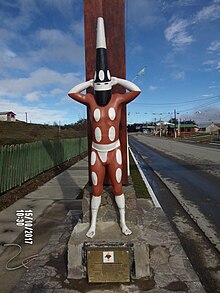
Aztec mythology is the body or collection of myths of the Aztec civilization of Central Mexico. The Aztecs were Nahuatl-speaking groups living in central Mexico and much of their mythology is similar to that of other Mesoamerican cultures. According to legend, the various groups who were to become the Aztecs arrived from the north into the Anahuac valley around Lake Texcoco. The location of this valley and lake of destination is clear – it is the heart of modern Mexico City – but little can be known with certainty about the origin of the Aztec. There are different accounts of their origin. In the myth the ancestors of the Mexica/Aztec came from a place in the north called Aztlan, the last of seven nahuatlacas to make the journey southward, hence their name "Azteca." Other accounts cite their origin in Chicomoztoc, "the place of the seven caves", or at Tamoanchan.

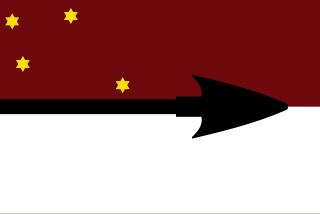
The Selk'nam, also known as the Onawo or Ona people, are an indigenous people in the Patagonian region of southern Argentina and Chile, including the Tierra del Fuego islands. They were one of the last native groups in South America to be encountered by migrant Europeans in the late 19th century. In the mid-19th century, there were about 4,000 Selk'nam; by 1919 there were 297, and by 1930 just over 100.

The Chonan languages are a family of indigenous American languages which were spoken in Tierra del Fuego and Patagonia. Two Chon languages are well attested: Selk'nam, spoken by the people of the same name who occupied territory in the northeast of Tierra del Fuego; and Tehuelche spoken by the people of the same name who occupied territory north of Tierra del Fuego. The name 'Chon', or Tshon, is a blend of 'Tehuelche' and 'Ona'.

The Yahgan are a group of indigenous peoples in the Southern Cone of South America. Their traditional territory includes the islands south of Isla Grande de Tierra del Fuego, extending their presence into Cape Horn, making them the world's southernmost human population.

Anne MacKaye Chapman was a Franco-American ethnologist who focused on the people of Mesoamerica writing several books, co-producing movies, and capturing sound recordings of rare languages from the Northern Triangle of Central America to Cape Horn in South America.

Hittite mythology and Hittite religion were the religious beliefs and practices of the Hittites, who created an empire centered in what is now Turkey from c. 1600–1180 BC.
Esteban Lucas Bridges was an Anglo-Argentine author, explorer, and rancher. After fighting for the British during the First World War, he married and moved with his wife to South Africa, where they developed a ranch with her brother.
Ona, also known as Selk'nam (Shelknam), is a language spoken by the Selk'nam people in Isla Grande de Tierra del Fuego in southernmost South America.

Fuegians are the indigenous inhabitants of Tierra del Fuego, at the southern tip of South America.

Ángela Loij López, baptized as Ángela Gómez, was an Argentine-Chilean woman considered to be the last surviving individual of full-blooded Selk'nam (Ona) descent, an indigenous group that resided in Tierra del Fuego.
Dualism in cosmology or dualistic cosmology is the moral or spiritual belief that two fundamental concepts exist, which often oppose each other. It is an umbrella term that covers a diversity of views from various religions, including both traditional religions and scriptural religions.
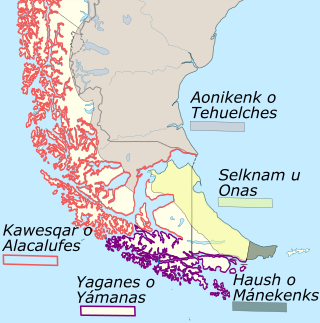
The Haush or Manek'enk were an indigenous people who lived on the Mitre Peninsula of the Isla Grande de Tierra del Fuego. They were related culturally and linguistically to the Selk'nam people who also lived on the Isla Grande de Tierra del Fuego, and to the Tehuelche people of southern mainland Patagonia.
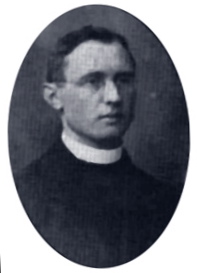
Martín Gusinde was an Austrian priest and ethnologist famous for his work in anthropology, particularly on the native groups of Tierra del Fuego. He was one of the most notable anthropologists in Chile in the first half of the 20th century, together with Max Uhle and Aureliano Oyarzún Navarro.
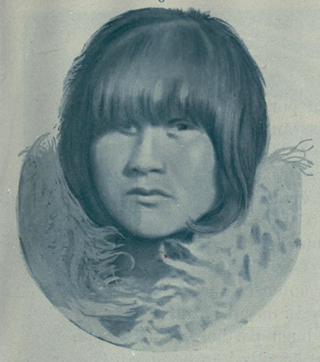
Lola Kiepja was a Selk'nam shaman nationalized as an Argentine, known as "the last Ona" or "the last Selk'nam", due to being the last person of Selk'nam ethnicity to have directly grown up in an indigenous community, having learned their way of life, traditions, religion, and language.
The Teushen language is an indigenous language of Argentina, which may be extinct. It was spoken by the Teushen people, a nomadic hunter-gatherer people of Patagonia, who lived between the Puelche people to their north and the Tehuelche people to the south, who occupied the central part of the Tierra del Fuego region. The tribe is now extinct.
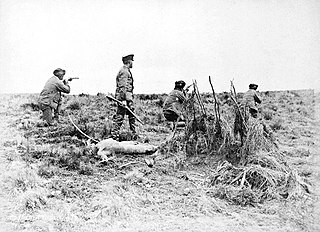
The Selk'nam genocide refers to the systematic extermination of the Selk'nam or Ona people, one of three indigenous tribes populating Tierra del Fuego in South America, from the second half of the 19th to the early 20th century. The genocide spanned a period of between ten and fifteen years. The Selk'nam had an estimated population of 4,000 people around the 1880s but saw their numbers reduced to 500 by the early 1900s.

The mythology of Indonesia is very diverse, the Indonesian people consisting of hundreds of ethnic groups, each with their own myths and legends that explain the origin of their people, the tales of their ancestors and the demons or deities in their belief systems. The tendency to syncretize by overlying older traditions with newer foreign ideas has occurred. For example, the older ancestral mythology might be merged with foreign mythology, such as Hindu, Islam, or Christian biblical mythology.

Thomas Bridges was an Anglican missionary and linguist, the first to set up a successful mission to the indigenous peoples in Tierra del Fuego, an archipelago shared by Argentina and Chile. Adopted and raised in England by George Pakenham Despard, he accompanied his father to Chile with the Patagonian Missionary Society. After an attack by indigenous people, in 1869 Bridges' father, Despard, left the mission at Keppel Island of the Falkland Islands, to return with his family to England. At the age of 17, Bridges stayed with the mission as its new superintendent. In the late 1860s, he worked to set up a mission at what is now the town of Ushuaia along the southern shore of Tierra del Fuego Island.
